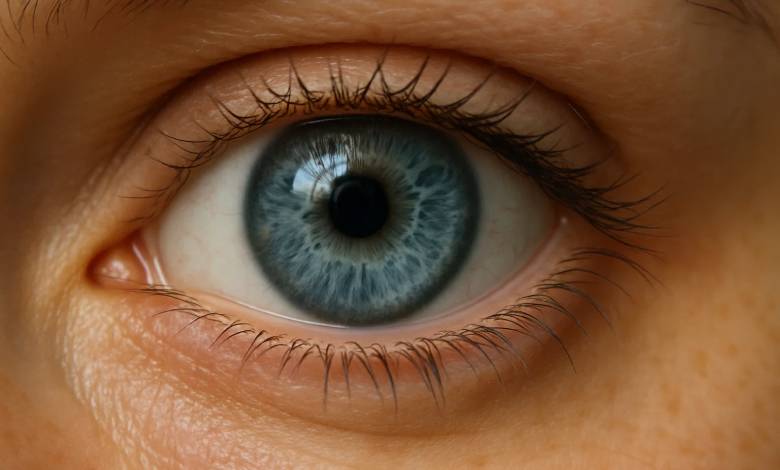Scientists Claim to Have Found Colour No One Has Seen Before, Do You Know The Name ?

A group of scientists claims to have discovered a new colour, named “olo,” which the human eye cannot perceive without technological assistance.
Researchers based in the United States reported they could “experience” this new hue by using a device that fires laser pulses directly into the eye, a machine inspired by the Wizard of Oz. While invisible to the unaided eye, the five individuals who observed “olo” described it as resembling a vivid teal.
What Did the Study Find?
Professors from the University of California, Berkeley, and the University of Washington School of Medicine detailed their findings in a Science Advances article published on April 18. They introduced a technique, called “Oz,” that manipulates the human eye into perceiving the previously unseen colour.
The device is named after the 1900 novel The Wonderful Wizard of Oz by L. Frank Baum, where the fictional Emerald City’s dazzling appearance is an illusion created through special green-tinted glasses.
How Does Human Colour Vision Work?
The human retina contains three types of cone cells for detecting colour: S cones (short, blue wavelengths), M cones (medium, green wavelengths), and L cones (long, red wavelengths).
Francis Windram, a research associate at Imperial College London’s Department of Life Sciences, explained to Al Jazeera that the retina processes these signals before transmitting them via the optic nerve to the brain’s visual cortex.
How Was ‘Olo’ Discovered?
Under normal conditions, M cones overlap in function with S and L cones, making it impossible to stimulate them individually using natural light.
“There’s no natural wavelength that stimulates only the M cone,” explained Ren Ng, a professor at UC Berkeley, in a university article. Ng questioned whether isolating the M cones could reveal a unique, ultra-green hue.
To explore this, Ng collaborated with Austin Roorda, a UC Berkeley professor and co-inventor of the Oz device. The technology, described by Roorda as “a microscope for the retina,” uses precise microdoses of laser light to stimulate specific photoreceptors and is already applied in eye disease research.
The project began in 2018, led by James Carl Fong, a PhD student at UC Berkeley, with Hannah Doyle later conducting the experiments that enabled participants to witness olo.
Is Olo Truly a ‘New’ Colour?
Olo has always existed physically but lies beyond the range of human-visible colours. Several similar hues exist outside our visual capabilities.
However, Francis Windram pointed out that sociolinguistically, if people begin identifying and naming such colours thanks to technology, they could be considered “new” in cultural terms.
Who Has Seen Olo?
Five individuals, four men and one woman all with normal colour vision have seen olo.
Three participants, including Roorda and Ng, were co-authors of the research paper, while two others from the University of Washington lab participated without prior knowledge of the experiment’s purpose.
What Does Olo Look Like?
Those who experienced olo described it as a highly saturated teal or blue-green, unlike anything previously seen.
UC Berkeley’s article calls it a “blue-green colour of unmatched saturation.”
Roorda said it appeared “like the most saturated teal imaginable,” while Hannah Doyle added that seeing olo felt immediately striking, describing it as “very blue-green.”
Although a teal-coloured square may visually approximate it, the human eye cannot naturally see true olo. According to The Guardian, Ren Ng noted that current displays, including VR technology, are far from capable of rendering olo.
Potential Applications for Colour Blindness
The UC Berkeley team is exploring whether the Oz technique could assist those with colour blindness.
Windram noted that effectiveness would depend on the type of colour vision deficiency. For example, people with deuteranomaly reduced green sensitivity could theoretically benefit from directly targeted cone stimulation.
However, he cautioned that given the current requirement for the laser to stably and precisely hit specific cones, creating a portable or wearable version of the technology remains a distant prospect.
How Is Colour Perception Defined?
Windram outlined that colour perception consists of three layers:
- Physical — light wavelengths reaching the eye;
- Neurological — how the brain processes these signals;
- Societal/Linguistic — how colours are named and interpreted across cultures.
He noted that while someone may call a colour “red,” another may see it as “claret” or “crimson,” depending on context and language.
Illustrating human differences in colour perception, Windram cited the 2015 viral debate over a dress’s colour seen as either white and gold or blue and black—where perceptions varied due to lighting interpretation.
Do Animals See Colours Differently?
Indeed, animals often perceive colours beyond human capability. For example, the mantis shrimp can detect 12 colour channels, compared to humans’ three, and can also perceive ultraviolet and polarised light, according to the Australian Academy of Science.
Interestingly, while humans can blend two colours to see an intermediate shade (e.g., red and blue to purple), mantis shrimp perceive each channel separately without mixing colours.
In contrast, dogs possess only two cone types and mainly perceive shades of yellow and blue.




